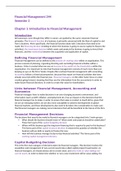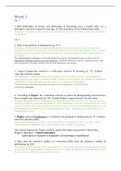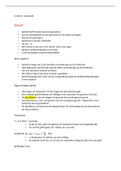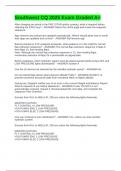HEALTH @ WORK SSV
Model workload —> takes work as a starting point for understanding health
• External workload —> task content, woking conditions, working relations, employment terms
• Job control —> ability of worker to reduce the external load
• Physical work capacity —> The full range of physical & psychosocial characteristics of the
worker at a certain moment
• Physical workload —> Refers to short term health effects
• Health effects —> Long-term health effects caused by work demands
How can we intervene?
Reduce external load —> E.g. tools, more resting times, higher rewards
Enhance job control —> Give worker more power to adapt job
Work capacity —> Enhance skills, knowledge, attitudes, physically more trained
ICF model —> How does your health condition influence your participation at work
• Body functions and structures and participation influence activities
• Environmental factors and personal factors influence activities
• Activities influence your health condition
• Health condition influences body functions and structures and participation again
Shift work may increase the risk of:
- Diabetes
- Cardiovascular disease
- Sleep problems
- Metabolic syndrome
- Respiratory infections
• Next to disturbed metabolic and immunological functions, night work can be associated with
poor lifestyle behaviours that may explain the night-work related health effects.
• Sleep problems are 1,5 to 2 times more common in night workers than in day workers.
• Night workers more often have shorter (<7 hours) and longer (>9 hours) sleep duration than day
workers. This can be explained by shorter sleep duration during night shifts and by the
compensation before and after their night shift of their sleep deprivation during their night shift
period.
, • Poor diet, physical activity and poor sleep partly explain the association between night work
and obesity
• Poor sleep partly explain the association between night work and diabetes
Health promotion at the workplace
- Through the workplace, you can reach a large group
- The workers are mostly homogeneous, offer a program that meets the needs of most workers
- Communication channels available at the workplace
- Social networks, that are important for social support form colleagues.
- Within a company building, changes in the work environment are possible
Worksite intervention components:
1. Environmental changes and policy
2. Informational messages
3. Behavioral skills or approaches
These can influence:
1. Knowlegde
2. Attitudes
3. Social norms and support
4. Environmental conditions
These can influence behaviors
Work is healthy:
Work gives you income, so you can buy goods that provide health, don’t worry about money
Structure in daily life
Social contacts
Satisfaction
Contribution to society
In the sectors with the most physical workload, the sickness absence is the highest
Model of effective intervention implementation
1. Incidence —> Asses the problem, how big is the problem, what are the groups in which this
problem is the biggest
2. What are the rick factors to get MSD
3. Underlying mechanisms —> Why do these risk factors cause MSD
4. Development of intervention
5. Evaluation of intervention
6. Implementation of effective interventions
Step 1
Measure the incidence of MSD with for example descriptive epidemiological data. Look for data
that indicates how many people cope with this pain/severity.
Step 2
Do a systematic review, search literature, on the possible association between standing and leg
pain.
Step 3
Look at the physiological and medical reasons for the pain in those specific workers, and also
look at the general reason for a leg pain and try to connect it to the working conditions. So do a
literature research on how standing can effect biological mechanisms (for example the effect on
the spine) that can cause MSD’s.
When selecting and developing an intervention, the following steps are essential:
Develop a precise and concrete problem / risk assessment
Search for effective interventions
Consider characteristics of the target population in relation to effective interventions
Tailor intervention to needs’ preferences of target population.
Model workload —> takes work as a starting point for understanding health
• External workload —> task content, woking conditions, working relations, employment terms
• Job control —> ability of worker to reduce the external load
• Physical work capacity —> The full range of physical & psychosocial characteristics of the
worker at a certain moment
• Physical workload —> Refers to short term health effects
• Health effects —> Long-term health effects caused by work demands
How can we intervene?
Reduce external load —> E.g. tools, more resting times, higher rewards
Enhance job control —> Give worker more power to adapt job
Work capacity —> Enhance skills, knowledge, attitudes, physically more trained
ICF model —> How does your health condition influence your participation at work
• Body functions and structures and participation influence activities
• Environmental factors and personal factors influence activities
• Activities influence your health condition
• Health condition influences body functions and structures and participation again
Shift work may increase the risk of:
- Diabetes
- Cardiovascular disease
- Sleep problems
- Metabolic syndrome
- Respiratory infections
• Next to disturbed metabolic and immunological functions, night work can be associated with
poor lifestyle behaviours that may explain the night-work related health effects.
• Sleep problems are 1,5 to 2 times more common in night workers than in day workers.
• Night workers more often have shorter (<7 hours) and longer (>9 hours) sleep duration than day
workers. This can be explained by shorter sleep duration during night shifts and by the
compensation before and after their night shift of their sleep deprivation during their night shift
period.
, • Poor diet, physical activity and poor sleep partly explain the association between night work
and obesity
• Poor sleep partly explain the association between night work and diabetes
Health promotion at the workplace
- Through the workplace, you can reach a large group
- The workers are mostly homogeneous, offer a program that meets the needs of most workers
- Communication channels available at the workplace
- Social networks, that are important for social support form colleagues.
- Within a company building, changes in the work environment are possible
Worksite intervention components:
1. Environmental changes and policy
2. Informational messages
3. Behavioral skills or approaches
These can influence:
1. Knowlegde
2. Attitudes
3. Social norms and support
4. Environmental conditions
These can influence behaviors
Work is healthy:
Work gives you income, so you can buy goods that provide health, don’t worry about money
Structure in daily life
Social contacts
Satisfaction
Contribution to society
In the sectors with the most physical workload, the sickness absence is the highest
Model of effective intervention implementation
1. Incidence —> Asses the problem, how big is the problem, what are the groups in which this
problem is the biggest
2. What are the rick factors to get MSD
3. Underlying mechanisms —> Why do these risk factors cause MSD
4. Development of intervention
5. Evaluation of intervention
6. Implementation of effective interventions
Step 1
Measure the incidence of MSD with for example descriptive epidemiological data. Look for data
that indicates how many people cope with this pain/severity.
Step 2
Do a systematic review, search literature, on the possible association between standing and leg
pain.
Step 3
Look at the physiological and medical reasons for the pain in those specific workers, and also
look at the general reason for a leg pain and try to connect it to the working conditions. So do a
literature research on how standing can effect biological mechanisms (for example the effect on
the spine) that can cause MSD’s.
When selecting and developing an intervention, the following steps are essential:
Develop a precise and concrete problem / risk assessment
Search for effective interventions
Consider characteristics of the target population in relation to effective interventions
Tailor intervention to needs’ preferences of target population.










